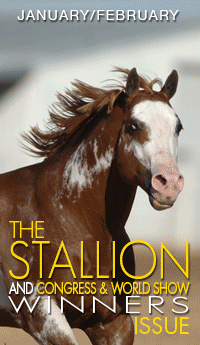NRHA Germany Organizes First Para Reining Training Camp
February 13, 2014 Comments Off on NRHA Germany Organizes First Para Reining Training Camp
“Our goal is to give as many handicapped people the chance of taking part as possible,“ says NRHA Germany Vice President Paul Kratschmer. “We intend to keep fees as low as possible, so we are talking to potential sponsors at the moment.”
Continue reading …Open Wide! Dental Problems in Horses- Loose Incisors
February 11, 2014 Comments Off on Open Wide! Dental Problems in Horses- Loose Incisors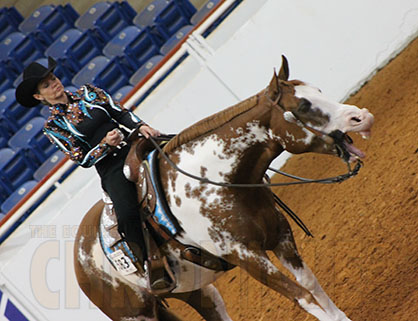
“In the early stages, it might be difficult to see. You may notice that the incisors are becoming a little loose. Some people have noticed that when they feed the horse a carrot, the horse doesn’t want to bite it because the teeth hurt.”
Continue reading …Bringing the Quarter Horse to Ireland With Craig Johnson Clinic
February 10, 2014 Comments Off on Bringing the Quarter Horse to Ireland With Craig Johnson Clinic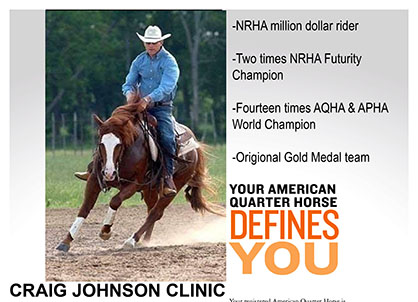
$1,000,000 Professional Horseman Craig Johnson will be running a weekend coaching clinic at Drumcoura Lake Resort in Ballinamore County, Leitrim, Ireland, as part of a scheduled series of events being run by the Irish Quarter Horse Association. For more information please contact IQHA via their webpage www.iqha.ie, call Derek O’Byrne White at 00353 (0)86 0830267, or email […]
Continue reading …What You Must Know When Feeding Genetically Modified Commercial Feed to Your Horse
February 7, 2014 Comments Off on What You Must Know When Feeding Genetically Modified Commercial Feed to Your Horse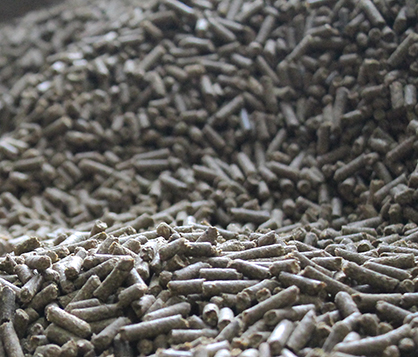
The bottom line here is that when a glyphosate contaminated plant is digested, the glyphosate in the plant is released into the horses gut and ties up (chelates) vital minerals necessary to the horse’s health.
Continue reading …Smooth Movement of Gaited Horses Caused by Genetic Mutation, Claims Study
February 6, 2014 Comments Off on Smooth Movement of Gaited Horses Caused by Genetic Mutation, Claims Study
This gene codes for a protein in a specific subset of neurons in the spinal cord that coordinates the movements of the animal’s legs. The mutated version of the gene causes a truncation of the DMRT3 protein, a genetic “mistake” that allows horses to pace and amble.
Continue reading …49th Equine Affaire in Ohio Will Host Stacy Westfall, Dana Hokana, Guy McLean, Bernie Traurig and More
February 6, 2014 Comments Off on 49th Equine Affaire in Ohio Will Host Stacy Westfall, Dana Hokana, Guy McLean, Bernie Traurig and More
Among those who are scheduled to present sessions on general horse training and riding topics are Guy McLean, Stacy Westfall, Kerry Kuhn, Tommie Turvey, and Richard Winters. Clinicians who will be addressing western disciplines will include Stacy Westfall on reining, Molly Powell on barrel racing, Richard Winters on reined cow horse, Dana Hokana on western pleasure, Kenda Lenseigne on mounted shooting, and Jeff Wilson on western dressage. The English disciplines will be well represented by Janet Foy and Michael Barisone on dressage, Bernie Traurig on jumping, Jim Wofford on eventing, Marc Johnson on driving, Wendy Gruskiewicz on hunter pleasure, and Dana Hokana on hunter under saddle.
Continue reading …Free Webinar: Arena Footing Solutions for Horse Professionals
February 5, 2014 Comments Off on Free Webinar: Arena Footing Solutions for Horse Professionals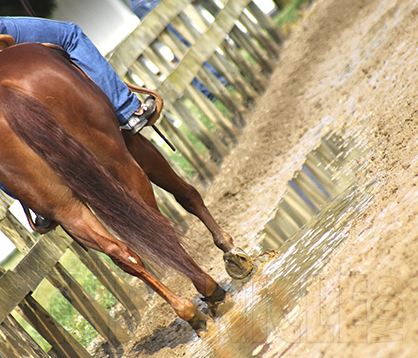
An arena that is poorly constructed or maintained can cause serious injury to a horse’s ligaments, joints or muscles. Whether you’re thinking about building a new arena or looking to update or repair your current one, this is one webinar that you’ll want to attend.
Continue reading …Dealing With Hoof Cracks: Sole Supports for Health and Strength
February 4, 2014 Comments Off on Dealing With Hoof Cracks: Sole Supports for Health and Strength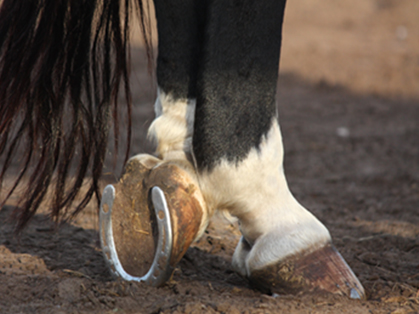
Pat Burton, a Texas farrier, has developed effective ways to rehabilitate cracked feet, using management rather than bar shoes or other types of special shoeing.
Continue reading …Feb./March Penn. Vet Lecture Series to Include: Emergency Relief, Stallion Handling, Newborn Foals, Mare Breeding Management, Foal and Mare Behavior and More
February 3, 2014 Comments Off on Feb./March Penn. Vet Lecture Series to Include: Emergency Relief, Stallion Handling, Newborn Foals, Mare Breeding Management, Foal and Mare Behavior and More
Dr. Michelle Abraham, resident in large-animal internal medicine at Penn Vet’s New Bolton Center, will deliver a presentation about newborn foals. Foals can be susceptible to many illnesses, and recognizing the first signs of disease can be vital to successful treatment and care. Dr. Abraham will discuss what to expect in a normal foal, tips on early recognition of illness, and information about various diseases.
Continue reading …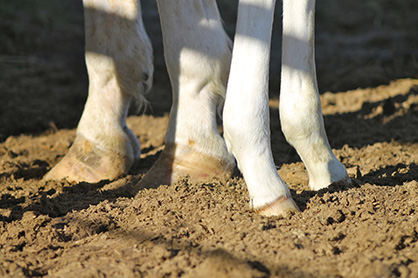
“There are also some causes of lameness that young horses are born with termed, ‘developmental bone disease,’ where the cartilage and bones do not form correctly.”
Continue reading …






